Menu
You can manage your membership and billing method by clicking here
Terms of Service
Privacy Policy
Copyright © 2025 Office of Immigration Australia, a private company registered in Australia. All Rights Reserved.

Checking membership status...
 EXCLUSIVE MEMBERS ONLY ACCESS
EXCLUSIVE MEMBERS ONLY ACCESSTo access this month’s edition & Member’s only resources, enter your registered email address.



Exclusive Australian Immigration News, Updates & Opportunities
February 2023
This bulletin is for members only, and provides our members with month to month updates on Australian immigration policy changes and consequential opportunities. Opportunities are found via federal and state government policy shifts for the demand and supply for certain occupations.
This bulletin will keep you up to date so that you do not have to employ expensive immigration lawyers to provide you with monthly research.
February 2023 has landed, and Australia is now on track for a 2023 Migration BOOM as arrivals dwarf Treasury forecasts!
With the biggest labour shortage since World War II and a new government accelerating visa processing, 2023 will prove to be a BIG year for Australian immigration!
In this months bulletin, the Labor Government has now been urged by Australian business groups to further raise the annual permanent migration intake to make up for the hundreds of thousands of missing workers who were unable to relocate to Australia during the pandemic!
In this month’s ‘Federal News‘, the government’s recently released 2022 Population Statement shows that the COVID pandemic has blown a million-person hole in Australia’s population projections, however a speedy recovery in migration promises to soften the blow.
In other federal news, the former Department of Immigration secretary Abul Rivzi said he expects much higher numbers of people would be granted the Skilled Independent visa (subclass 189) this financial year!
In this month’s ‘State News’, states and territories have increasingly relaxed many of their criteria, including point scores, work experience and application fees to make it easier for people to apply for state-nominated visas. Additionally, it is expected that the number of visas available through the state and territories is set to dramatically increase thanks to a larger regional allocation.
In other state news, skilled workers residing offshore remain eligible to be considered for ALL State and Territory nominations! Please view the State Migration Section of this month’s bulletin for all State and Territory program updates and opportunities available!
In this month’s ‘Economic News’, Australia is facing the western world’s second-worst employee shortage, with some companies offering signing bonuses and flying them in from overseas. Australia is now reviewing its entire visa and immigration system in an all-out effort to rapidly increase its workforce. The review is due to come out this month.
In this month’s ‘Student News’, Australian universities have been “inundated” with applications from international students as demand exceeds pre-covid levels! In this month’s edition, we also explain the reason behind student visa delays and provide 4 tips to help speed up your student visa application!
All this and much more in the February issue of The Australian Immigration Bulletin! Let’s take a deeper look at what has happened so far and what is planned for the remainder of February 2023 in Australian Immigration, so that you can start planning!
In case you missed it…
We are excited to announce a new benefit now available which allows all our member’s FREE access to an online platform and course to practice, study and improve their English and IELTS score. The IELTS exam is one of the key recommended exams you will need to take in order to Apply for Skilled Migration to Australia and the better your results, the higher points you will get when submitting an expression of interest. The advanced English and IELTS platform will allow all members to practice Mock IELTS Exams, learn cutting edge tips and gain a greater understanding of how to achieve a Band 7+.
We are also excited to announce “ImmiConnect” which is now available in the member’s area. ImmiConnect is the Office of Immigration Australia’s Employer Sponsored program which allows overseas workers to receive job interview invitations from Australian employers, when job opportunities come available.
The program aims to bring globally mobile, highly-skilled and specialised individuals to Australia who can fill critical areas of need.
ImmiConnect is exclusive to active Australian Immigration Bulletin Members only. You must be a current Australian Immigration Bulletin Member to be eligible to receive job interview invitations.
So if you are interested in receiving these invitations, please sign up for FREE by Clicking “ImmiConnect” and adding your name and email address.
As of 6th July 2022, people entering Australia do NOT need to provide evidence of Covid-19 vaccination status. Additionally, people leaving Australia will NOT be asked to provide evidence of their vaccination status. Unvaccinated visa holders do NOT need a travel exemption to travel to Australia. It is however important to remember that airlines, vessel operators and other countries may have specific requirements that travellers need to comply with.
Please see the list of vaccines that are recognised by the Australian government for travel purposes here.
As legislation and travel requirements are constantly changing, we strongly recommend obtaining advice on your individual situation from a Registered Migration Agent.
Please click here to book a consultation with one of our Registered Australian Migration Agents, located in Australia.
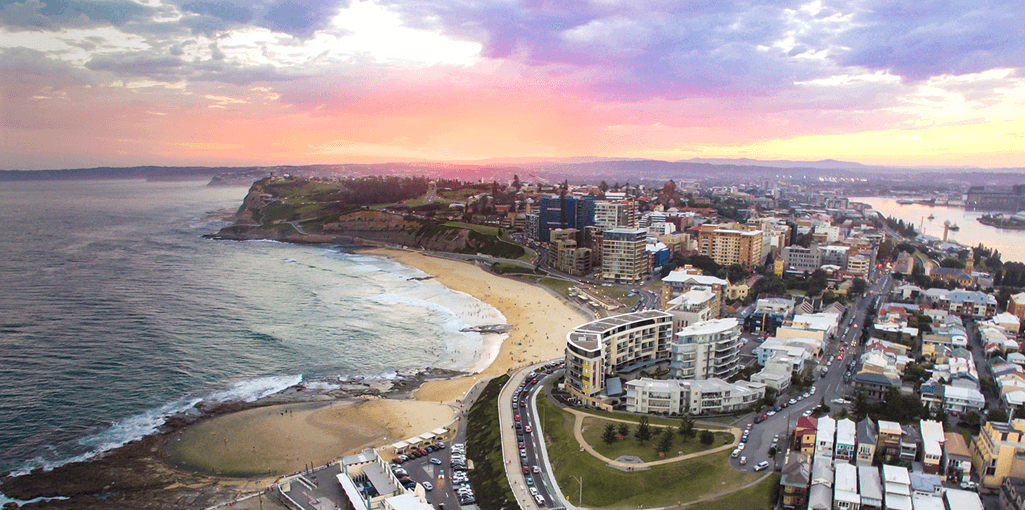
The Results of the August 2021 census were made public on 12th July 2022, and revealed that Australia has become a majority migrant nation, as the census data shows for the first time that more than 50 per cent of residents were born overseas or have an immigrant parent. Last year’s census counted nearly 25.5 million people, including 1 million new residents.
Australia’s 2022-23 Migration Program has been carefully designed to boost the social and economic outcomes that meet Australia’s needs. In fact, the migration programme was first launched in 1945 following the aftermath of World War 2. Given this long history, it is worth understanding how it works. The Australian Immigration Bulletin exists to help explain this in more detail.
As we’ve entered the 2nd month of the year, join us for a look at the latest news and developments in the world of Australian Immigration!
We asked those who have established themselves with skilled jobs to share their experience and tips for a career in Australia.
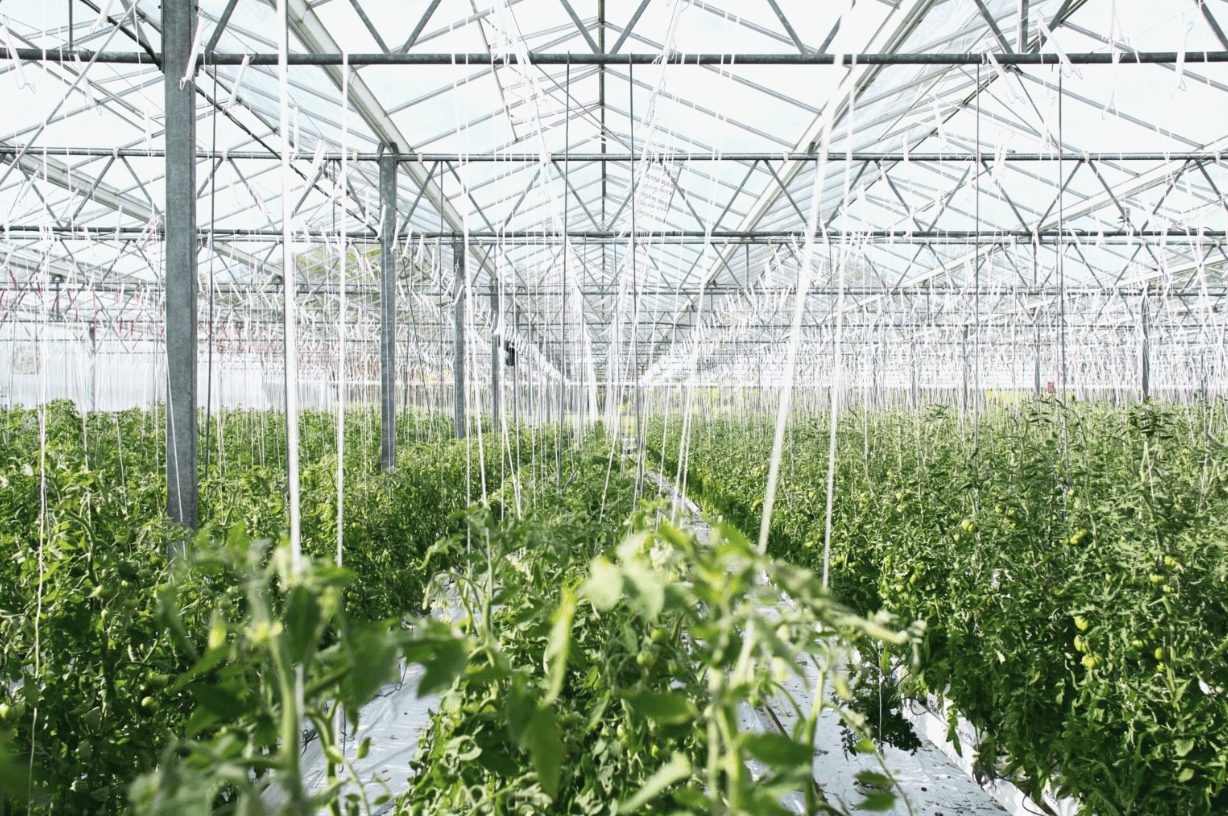
We spoke with a skilled migrant who had recently started work in agriculture.
Tell us about your job.
I’m currently doing a graduate program. The purpose is to gain experience in hi-tech growing techniques and protective cropping strategies.
What things do you wish you knew before you started your job search?
I think the resume and cover letter I prepared at the beginning was too long. So, I deleted some irrelevant content.
Also how to sell myself, like show my skills to the employer properly, and to be confident.
What obstacles did you face?
Language is the first obstacle. I would prepare for my interview, such as the possible questions, and I would then practice it.
When I was in the interview, I made sure that I understood what the question was. If I was not sure, I would double check with them. For example, speak it out in my own words and check with them if it is what they asked.
What advice can you share with job seekers in Australia?
Be confident in what skills you have and be positive.
Do not reject any chance. Even if it is a lower position.
Make sure you are in the industry because in that way you can build up a connection with people in the industry and it’s easier to show your potential employer who you are and what you can do.
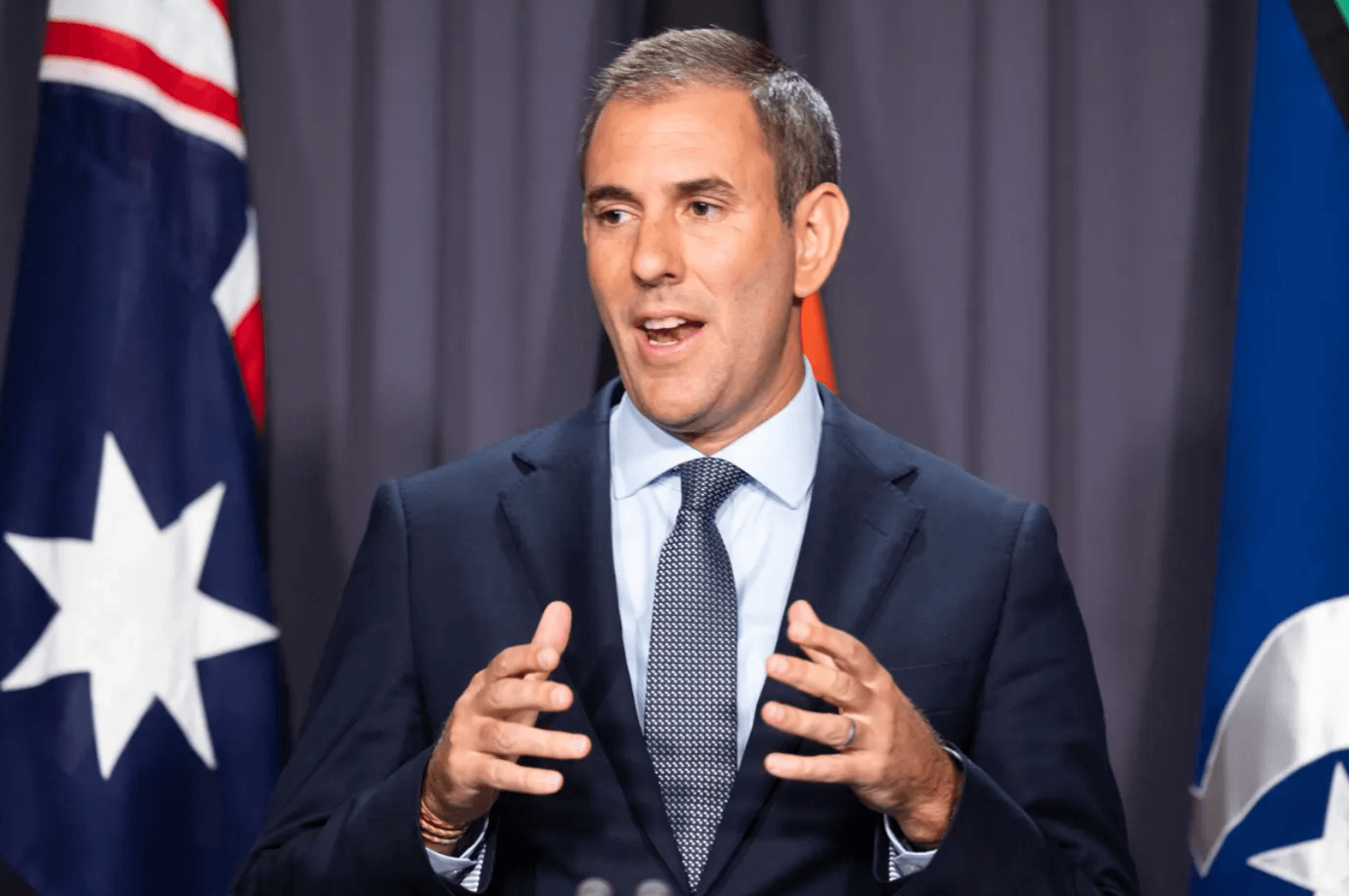
Australia is on track for net migration of more than 300,000 people this year, more than 25% higher than Treasury forecasts, due to a surge in arrivals.
Treasurer Jim Chalmers says the 235,000 increase in net overseas migration forecast in the October budget is likely to be wrong, with the real figure expected to be much higher after a strong rebound in arrivals.
Dr Chalmers said it was reasonable to expect migration to be higher given extreme labour shortages were creating strong pull factors and as the government worked to reduce a massive visa backlog.
“We’ve got serious skills shortages and labour shortages in our economy that are acting as a handbrake,” he said.
“It is a reasonable assumption the number that’s printed in the budget for [2022-23] may be higher than 235,000,” the Treasurer said, though he added the final estimate would not be known for some time.
The Albanese government last year boosted the permanent migration cap for 2022-23 following calls from businesses that said a lack of workers was holding them back.
The net overseas migration had been expected to return to pre-pandemic levels this financial year after turning negative for the first time since World War II, in a shift that would leave the population almost 500,000 people smaller than expected.
But a big rise in migration this financial year would reduce that figure.

The COVID pandemic has blown a million-person hole in Australia’s population projections in a challenge for an economy that has relied on having more consumers to drive growth, though a speedy recovery in migration promises to soften the blow.
Data in the government’s 2022 Population Statement also showed COVID-19 lowered life expectancy for the first time in decades, though the impact in Australia was modest compared to many of its developed world peers.
Pandemic border closures in 2020 and 2021 saw population growth crater to just 0.1%, far below the 1.6% average of the previous decade, while net migration turned negative for the first time since World War Two.
One result has been a widespread shortage of suitable labour and a drop in the jobless rate to a 48-year low of 3.4%, pushing up wages and adding to inflationary pressures.
Population growth is expected to rebound to 1.4% in the year to June 2023 and hold around there in coming years, but that would still mean there will be 1.2 million less Australians by 2032/33 than forecast before the pandemic.
The population will also end up older than projected, with the median age seen at 39.8 years by 2030/31 compared to the 38.4 years forecast pre-pandemic.
Fortunately for frustrated employers, net migration is recovering faster than first feared and is expected to match the pre-pandemic trend in 2022/23, a major turnaround from 2020/21 when there was a net outflow of 85,000.
“However, the recovery in migration is not expected to fully offset the lost population growth during the pandemic, with Australia expected to remain smaller and older than would have otherwise been the case,” the report concluded.
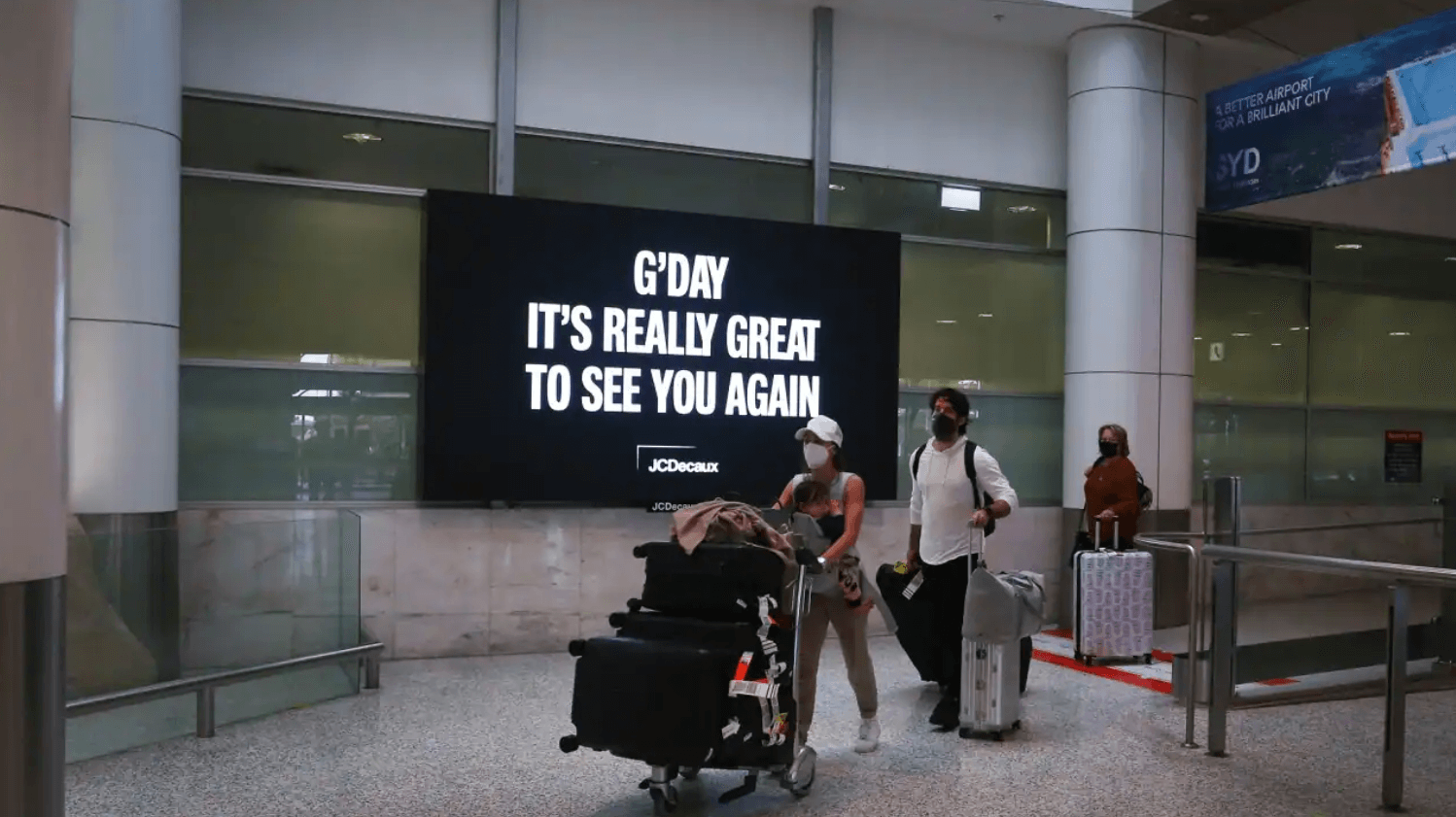
University of Melbourne Professor Peter McDonald says Australia’s migration levels could become “very high” in the coming years.
Migrants are returning in droves after the COVID-19 pandemic. “We are replacing people who weren’t in the country over a two-year period,” Mr McDonald said. “I think net migration could go quite high in the next year or two.”
Treasurer Jim Chalmers warned Australia still faces “crippling” labour and skills shortages, exacerbated by the COVID-19 pandemic. While there are signs of recovery, the pandemic is still expected to cost Australia 473,000 migrants by 2025-26.
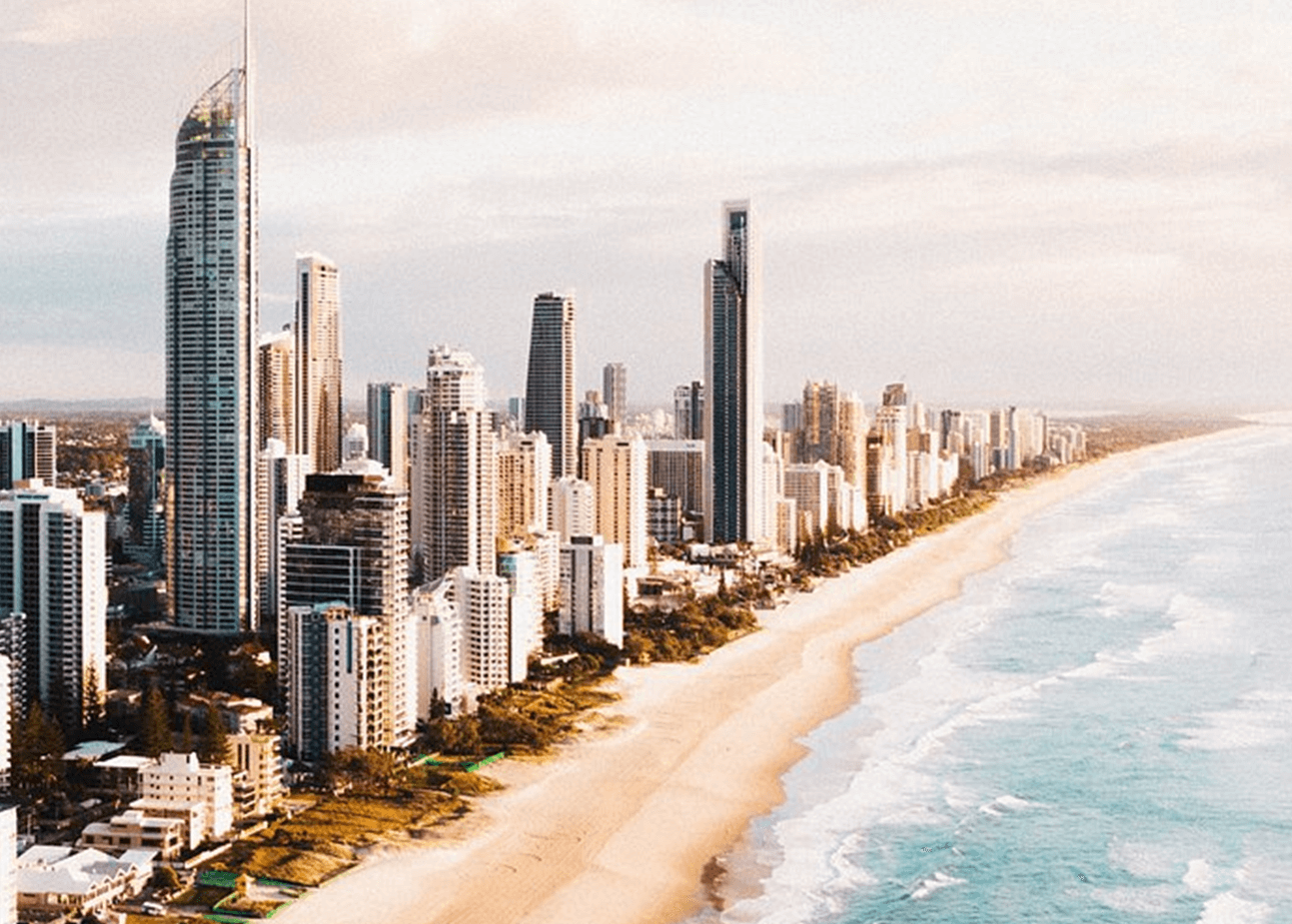
The chief economist of the Regional Australia Institute says the federal government needs to ensure enough overseas migrant populations are flowing into non-metropolitan areas.
*For migration purposes, most locations of Australia outside of major cities (Sydney, Melbourne, Brisbane, Perth, etc.) are classed as regional areas.
Last month’s release of the federal government’s 2022 population statement projected that fewer than 17 per cent of net overseas migration would flow to regional Australia in the coming year.
The independent think-tank says a greater dispersal of immigrants into the regions will bring greater productivity, help fill significant job shortages, boost infrastructure as well as buffer some areas from population decline.
The organisation’s chief economist Kim Houghton said the COVID-19 pandemic had shown how the country could be negatively affected by a lack of international migrants.
“The worker aspect is one that has become very stark over the last couple of years,” Dr Houghton said.
“That flow of people has become really important to regional communities.
“It’s not always visible and that is why it took some of us by surprise.”
He said overseas migrants would still be the single biggest driver of population growth over the next 10 years.
“It has been like that for a long time — we’re not making babies locally, so that flow-on has a real impact.”
In Victoria, the Regional Australia Institute (RAI) forecasts suggest about 7,000 people will migrate to regional Victoria each year for the next four years, compared to 70,000 to Melbourne.
It is predicted that by 2032-33, without net overseas migration, regional Victoria’s population would be in decline due to reduced birth rates.
Victoria’s west is well-acquainted with the challenges of attracting enough people to live and work locally.
A report released last year centred on the Northern Grampians, Pyrenees and Ararat areas found future population growth would be heavily reliant on migration.
Northern Grampians Shire mayor Kevin Erwin said Australia’s current migration policy focused on highly skilled migration, which was only sometimes what the regions need.
The report also found that backpacker visas excluded tourism and hospitality, a vital part of the local workforce.
Recent data shows country Australia reached a record 96,000 job vacancies in late 2022.
Last year, the RAI submitted suggested key policy changes to the federal government.
These included developing mechanisms to raise awareness of regional Australia among migrants in capital cities; supporting local settlement assistance to newly arrived migrants in regional areas; and setting a population target for regional Australia of 11 million by 2032.
To address skills shortages, 12 areas of regional Australia have also entered into Designated Area Migration Agreements (DAMAs) with the federal government.
The decision on whether to initiate DAMAs rests with local councils, chambers of commerce or Regional Development Australia offices.
“The department is enhancing its outreach and engagement capability to support delivery of its migration program and support businesses to meet their migration needs.”
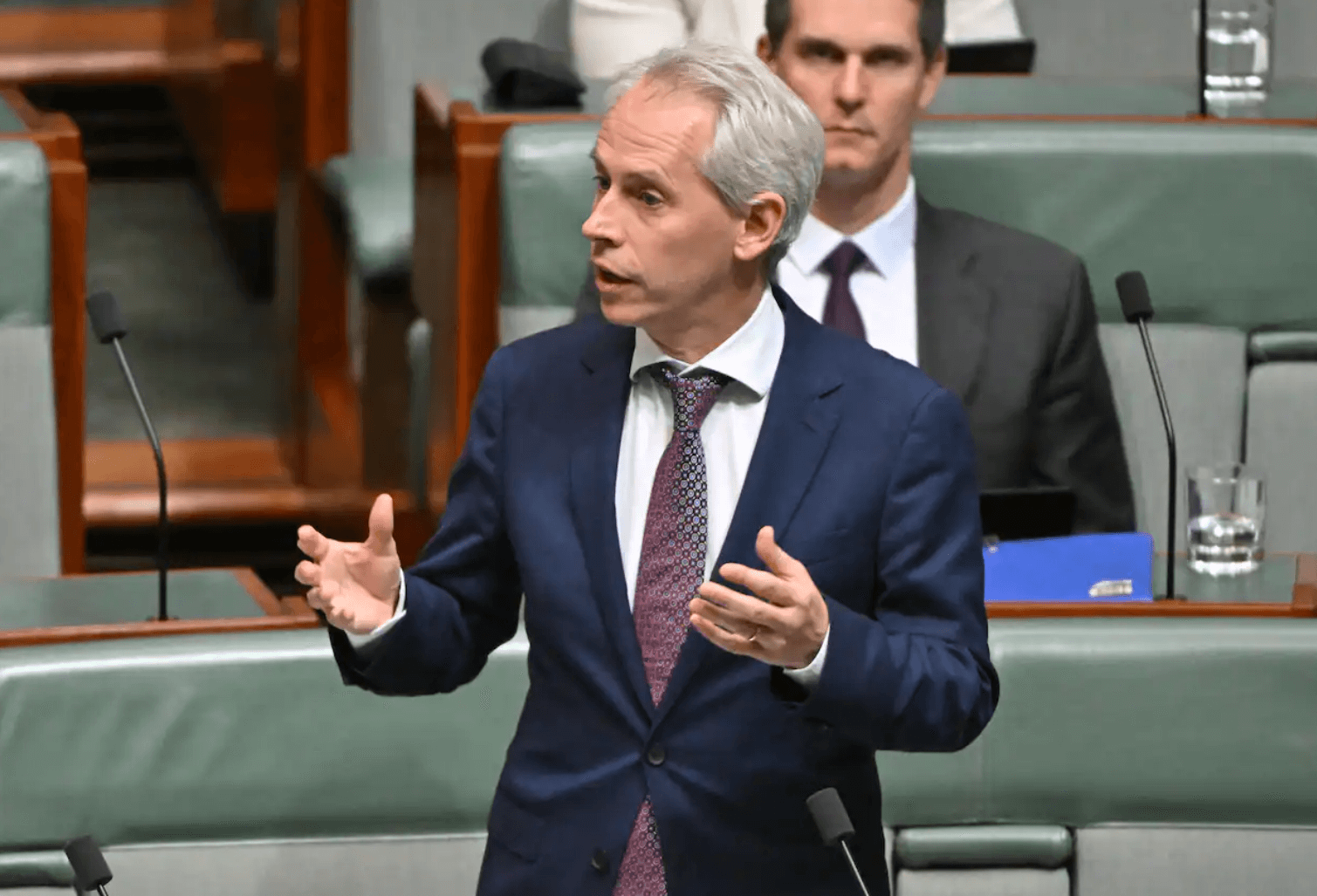
Former Department of Immigration secretary Abul Rivzi said the number of visas available through the state and territories is set to dramatically increase thanks to the larger regional allocation.
“What I’m noticing is some of the states are actually struggling to deliver quickly enough and so a lot of them are making changes to make their systems faster,” Mr Rizvi said.
States and territories have increasingly relaxed many of their criteria, including their skilled occupation lists, to make it easier for people to apply for state-nominated visas.
One of the biggest advantages of a state-sponsored visa is not being tied to a particular employer – although applicants have to be younger than 45 years old and have to also find their own jobs.
Most recently NSW changed the requirements for its visa applicants.
“Previously published points scores and work experience guides for the Skilled Nominated visa (subclass 190) have been removed due to increased availability of the Skilled Independent visa (subclass 189) by the Department of Home Affairs,” a notice on the NSW Government website states.
Mr Rivzi said he expected much higher numbers of people would also be granted Skilled Independent visas (subclass 189) this financial year, compared to the last two years when COVID-19 shut down Australia’s borders.
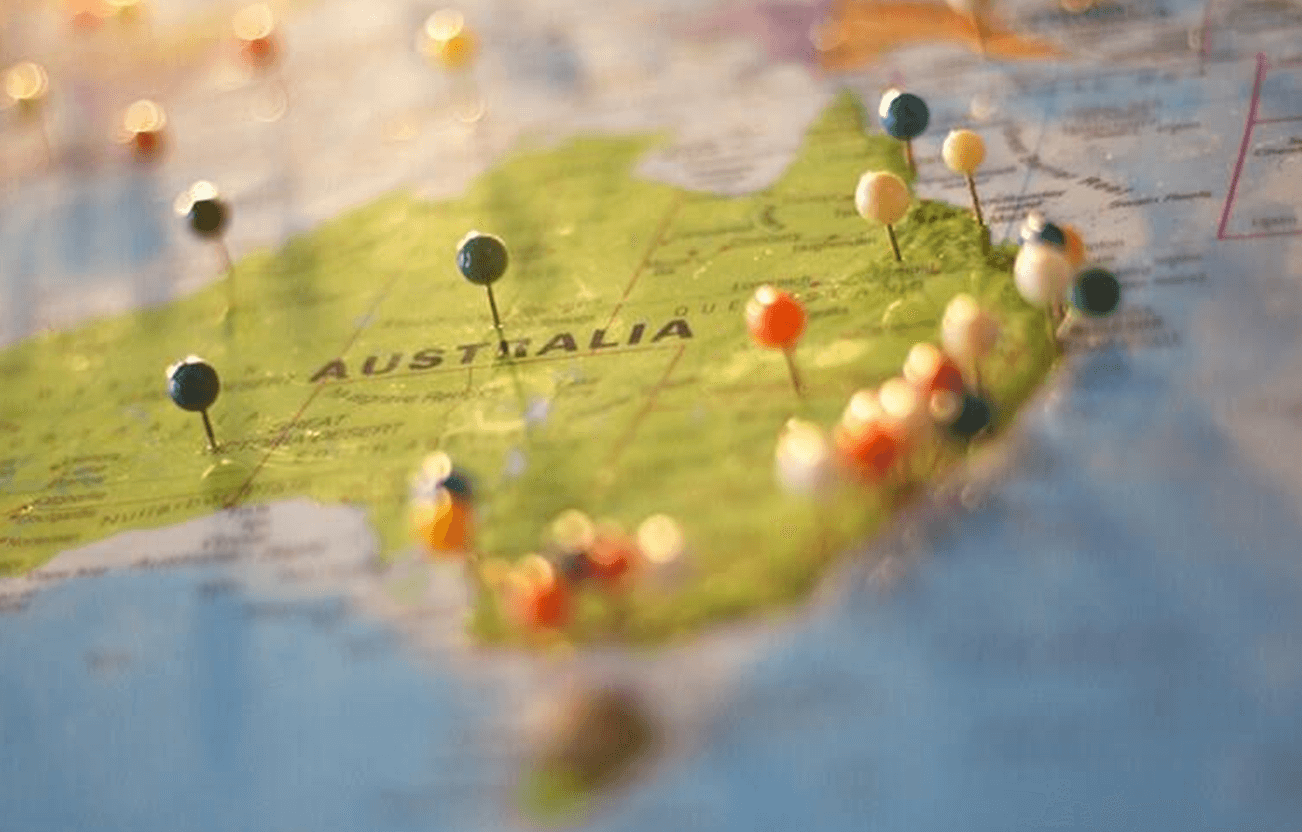
If you are interested in applying for a general skilled migration visa to Australia, it is important to have a good understanding of the skilled visa options and how the migration points test works, so that you can maximise your chances of being eligible to apply for a skilled visa.
A general skilled migration visa is an option available to skilled workers who are seeking to qualify for a skilled visa independently, or under a state or family sponsorship. It is an alternative to an employer sponsored visa.
One of the key criteria to qualify for a general skilled migration visa is the points test (a criterion that does not apply to employer sponsored visas). This is often the most challenging aspect for prospective skilled visa applicants to overcome when seeking an invitation to apply for the relevant skilled visa.
If you are considering applying for a general skilled migration program visa, an important concept to understand is the Expression Of Interest (EOI).
If you are considering applying for a general skilled migration visa, it is important to be aware that for certain visas in this visa class, you will first be required to lodge an EOI with the Department of Home Affairs (the Department) through SkillSelect. The EOI is not a visa application, but rather, it is the process by which you can express your interest in applying for the relevant skilled visa (It’s important to note, that there is NO fee to submit an EOI).
This requirement applies to the following skilled visa subclasses:
Let’s take a brief look at each of these visas below:
The ‘subclass 189’ is a federal sponsored visa that grants automatic permanent residence in Australia. It is subject to nil visa conditions or obligations. For this reason, it is often considered to be the most flexible of the skilled visa options available.
A subclass 189 points-based visa allows you to live and work in any state or territory permanently.
The ‘subclass 190’ is a state/ territory sponsored permanent residence visa. It is another points-based visa for which invitations are issued throughout each month by individual states and territories. One of the benefits of applying for state nomination is that you will be granted an additional 5 points.
An important aspect to consider, which does not apply to the subclass 189 visa is that there is an added step in the application process. In this case, you must also apply for nomination approval to a state or territory government. Only upon receipt of an invitation from the relevant state or territory to which you apply can you then apply to the Department for the visa itself.
Your obligations as a subclass 190 visa holder are that you must commit to your nominating jurisdiction’s obligations and commit to residing in your nominating State or Territory for two years from visa grant.
The ‘subclass 491’ is also a points-based state/ territory (or family) sponsored visa. It is a regional visa with a term of five years. The Department issues invitations for family sponsored EOI applications only (in invitation rounds). Invitations for state sponsorship are issued by individual states and territories throughout each month. This will grant you an additional 15 points for the nomination.
Being a provisional visa, this means it provides a pathway to permanent residence in Australia with the Subclass 191 Permanent Residence (Skilled Regional) visa, subject to meeting specified requirements.
Be mindful that as a subclass 491 visa holder, you must abide by visa condition 8579, which requires you to live, work and study in a designated regional area of Australia. For migration purposes, most locations of Australia outside of major cities (Sydney, Melbourne, Brisbane, Perth, etc.) are classed as regional areas.
If your EOI is successful, you will receive an invitation to apply for the visa, as specified in the invitation letter. This then enables you to proceed with lodgement of your visa application (provided you meet all other visa lodgement and visa grant requirements).
Please note, the below State and Territory program updates is a general overview only. It does not take into account any of your personal circumstances. You must check the State/Territory information carefully to ensure you can meet all the requirements for nomination.
Australia is currently facing a shortage of skilled migrants to fill workforce demands. In response, states and territories have been easing the conditions of their visa programs to help attract skilled workers from overseas.
Below is the monthly update for some of the State and Territory opportunities available.
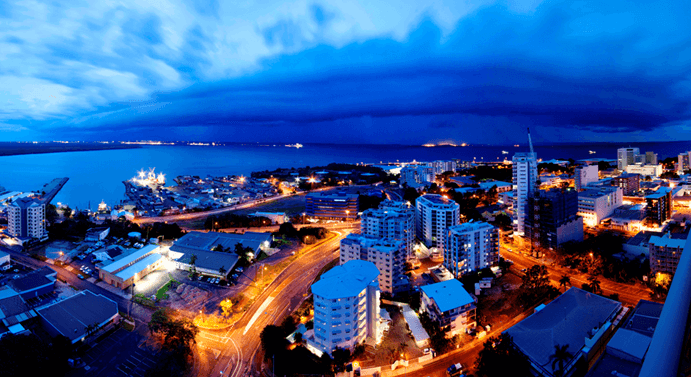
Program Status Update
People residing offshore are now eligible to be considered for Northern Territory (NT) nomination. Invitations to apply for Northern Territory nomination will be via the ranking system.
The ‘Northern Territory Offshore Migration Occupation List’ identifies the occupations in current demand in the Northern Territory. This List is important if you want to apply for Northern Territory nomination for either a:
The ‘Northern Territory Offshore Migration Occupation List’ is only applicable for those applying for NT nomination from outside Australia, under the Priority Occupation stream.
Please note: The Northern Territory government has advised that offshore applicants will generally only be offered a Northern Territory nomination for a subclass 491 visa. Subclass 190 nominations will only be offered in exceptional circumstances, such as cases where the applicant has strong connections to the NT.
The NT advises eligible applicants to apply as soon as they meet the eligibility criteria. To receive a nomination from the NT Government, you must:
Before submitting an EOI for The Northern Territory, applicants should check that they meet all eligibility requirements.
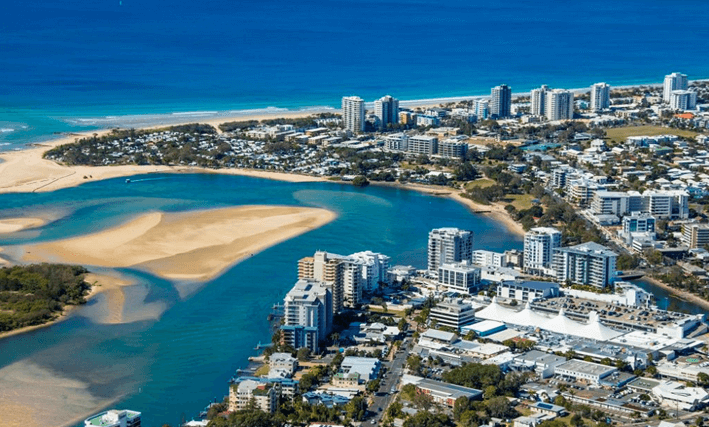
Program Status Update
To manage Queensland’s COVID recovery response, applicants currently residing offshore are now able to apply.
Depending on your occupation and situation, there are two state nomination options available for skilled migrants through Queensland.
For Queensland state nomination, prospective applicants must meet the Department of Home Affairs requirements, state-specific occupation requirements and have skills in an occupation that is available on the Queensland Skilled Occupation List.
You may undertake employment once onshore in Queensland through:
Offshore applicants meeting the minimum published requirements can now lodge a Registration of Interest (ROI).
Migration Queensland, the state government agency responsible for skilled visa nomination, has stated they will only accept a brand new EOI submitted on Skillselect from 16 August 2022. Updating existing EOI’s submitted prior to 16 August 2022 will not be invited.
The agency also requests all applicants to ensure they have carefully read and understood the new criteria relevant to their stream or pathway, and that they meet the criteria before submitting an Expression of Interest (EOI).
The 2022-23 Skilled Migration Program will be open to both onshore and offshore applicants and provide pathways for skilled workers, graduates, and small business owners.
Before submitting an EOI for Queensland, applicants should check that they meet all eligibility requirements.
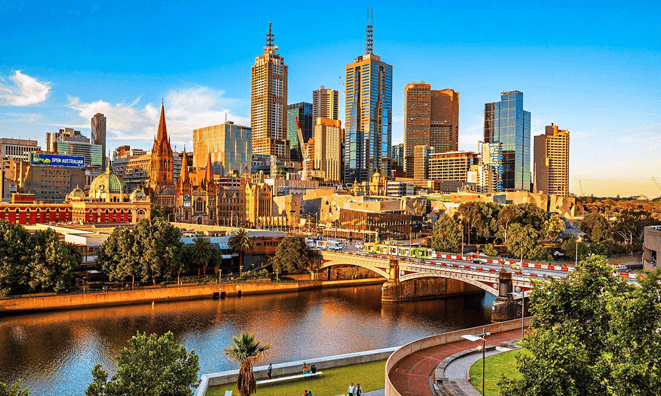
Program Status Update
Now open to offshore applicants, the program provides skilled migrants with a pathway to permanent residency in Victoria. The skills that successful applicants bring to Victoria benefits employers and the broader Victorian economy.
The program provides two visa pathways.
The Skilled Nominated visa (subclass 190) is a permanent visa for skilled migrants to live and work anywhere in Victoria. The Skilled Work Regional (Provisional) visa (subclass 491) is for skilled migrants to live and work in regional Victoria and provides a pathway to permanent residency through the Permanent Residence (Skilled Regional) visa (subclass 191).
As with previous years, applicants will first need to submit a Registration of Interest (ROI) and then be selected on competitive merit to apply for visa nomination.
Both onshore and offshore applicants are eligible to submit a Registration of Interest (ROI) for both the subclass 190 and subclass 491 visas.
This is a significant change from the 2021-22 Skilled Migration Program, which did not allow applications from individuals overseas. Additionally, the new program is a great opportunity for applicants who work in a variety of occupations, particularly since the 2021-22 program was previously aimed at applicants in science, technology, engineering, mathematics and medicine (STEMM).
If you submitted a ROI during the 2021-22 program, you must submit a new ROI to be selected to apply for the 2022-23 program.
Your ROI will remain in the system for selection until it is withdrawn, selected or the program year ends. The final day to submit a ROI is Friday, 5 May 2023.
Before submitting an ROI for Victoria, applicants should check that they meet all eligibility requirements.
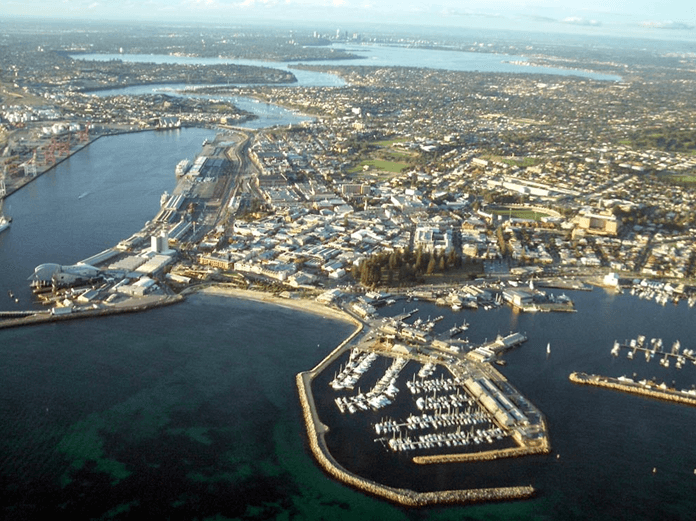
Program Status Update
People residing offshore are now eligible to be considered for Western Australia (WA) State nomination. Invitations to apply for WA State nomination will be via the ranking system.
The Western Australian Skilled Migration Occupation List identifies the occupations in current demand in Western Australia. This List is important if you want to apply for Western Australia nomination for either a:
Western Australia has increased occupations eligible for skilled migration by roughly 60 per cent for the 2022-23 program. New occupations have been added to both the Western Australian Skilled Migration Occupation List Schedule 1 (WASMOL Schedule 1) as well as the Western Australian Skilled Migration Occupation List Schedule 2 (WASMOL Schedule 2). In total, more than 100 occupations were added, including 46 in the health care sector, bringing the total to 276 occupations.
Some examples of the newly added jobs include:
For more information, consult the combined list of eligible occupations.
From 1 July 2022, the WA Government is also temporarily waiving the $200 application fee. Additionally, applicants who apply after this date will no longer need to provide proof of sufficient funds for WA State nomination.
Under the Western Australia Skilled Migration Program 2022-23, the English language requirement has also been reduced for applicants at the Manager and Professional occupation level. Applicants at this level will only need to demonstrate a “competent” proficiency in English (which is a minimum ‘IELTS score of 6’ for each of the 4 categories).
Before submitting an EOI for Western Australia, applicants should check that they meet all eligibility requirements.
With world-class education, healthy job opportunities and strong public health management, WA is a safe place to live, work and study.
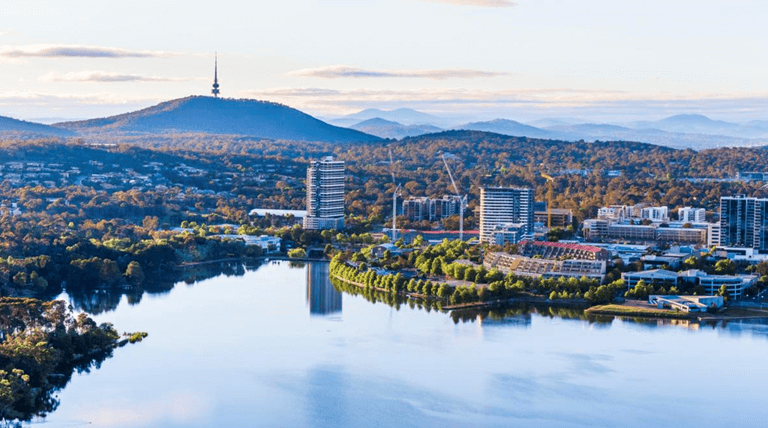
Program Status Update
The ACT Critical Skills List identifies the occupations in current demand in the ACT. This List is important if you want to apply for ACT nomination for either a:
The ACT Government will update this list every four months to make sure that the ACT Skilled Migration Program adapts and responds to the evolving critical skills needs of the ACT economy.
The Canberra Matrix is weighted to ensure that applicants who will make a positive economic contribution to the Territory and/or have demonstrated a genuine commitment to the ACT are more likely to be ranked and invited to apply for ACT nomination.
*ACT nomination does not guarantee a migration outcome. You must still meet the Department of Home Affairs criteria.
Every month, a certain number of nomination invitations are available (prorated on the annual allocation) to those working in the highest ranked Matrix in each occupation.
You can view the ACT’s most in-demand skills for skilled migration by consulting the ACT Critical Skills List.
Before submitting an EOI for The Australian Capital Territory, applicants should check that they meet all eligibility requirements.
Once you’ve submitted a valid Department of Home Affairs SkillSelect EOI, follow the ACT Government Process to apply for ACT nomination.
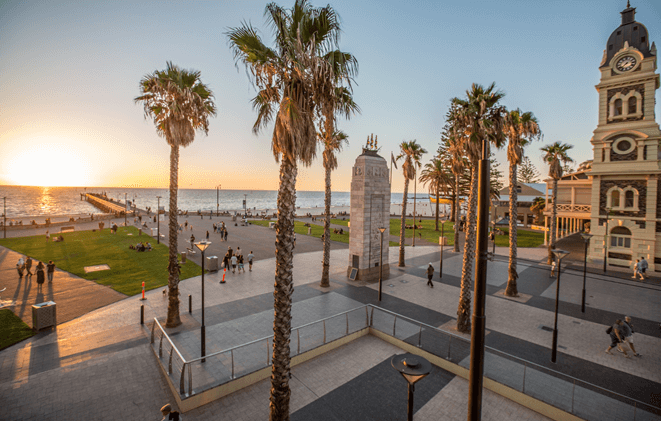
Program Status Update
To manage South Australia’s COVID recovery response, applicants currently residing offshore are able to apply.
Depending on your occupation and situation, there are two state nomination options available for skilled migrants through South Australia.
For South Australian state nomination, prospective applicants must meet the Department of Home Affairs requirements, state-specific occupation requirements and have skills in an occupation that is available on the South Australian Skilled Occupation List. Offshore applicants meeting the minimum published requirements can now lodge an Expression of Interest (EOI).
There is an enormous range of occupations on South Australia’s Skilled Migration Occupation List in a range of industries – search for your occupation here.
South Australia will increase its nominations of offshore skilled migrants in 2022-23. This is in order to make entry to the South Australian labour market faster, due to urgent skills shortages.
To do this, South Australia will select offshore applicants to apply for state nomination from those who have submitted an Expression of Interest (EOI) through SkillSelect. Offshore applicants will not need to lodge a Registration of Interest (ROI) for this year’s program. South Australia will be nominating offshore applicants from over 470 occupations on South Australia’s Skilled Migration Occupation List. To be eligible, ensure all the information in your SkillSelect EOI is up to date and you have selected South Australia as your first preferred state or territory to move to in Australia.
South Australia will be assessing candidates on merit by the following factors, within their nominated occupation:
Before submitting an EOI for South Australia, applicants should check that they meet all eligibility requirements.
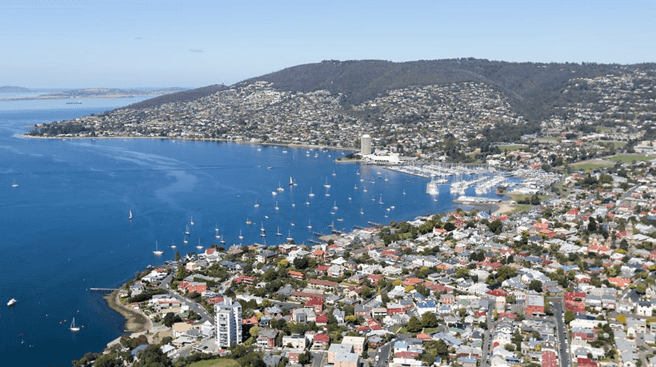
Program Status Update
Working in Tasmania
The two state nomination options available for skilled migrants through Tasmania are:
The Tasmanian State Nomination Skilled Migration Program supports Tasmanian businesses and increases the state’s working age population. It does this by attracting and retaining migrants with skills genuinely in need by employers, or with the capacity to settle in Tasmania through skilled employment in the long-term, and business activities that will increase employment opportunities.
Tasmania’s skilled migration program is for people wanting to move to the state who have skills that Tasmania need. Skilled migrants are attracted to Tasmania because of the state’s enviable lifestyle, career opportunities, affordable housing, reputable schools and a globally recognised university.
The new Migration Tasmania Application Gateway is now open!
The new Migration Tasmania Application Gateway is now open for registrations of interest (ROI) and applications for skilled visa nomination from Tasmania.
Anyone seeking Tasmanian nomination for a Subclass 190 Skilled Nominated Visa or Subclass 491 Skilled Work Regional Visa must now first register in the Migration Tasmania Application Gateway .
Before submitting an ROI for Tasmania, applicants should check that they meet all eligibility requirements for either;
Please also read the Gateway Information Page before applying for a Registration of Interest (ROI).
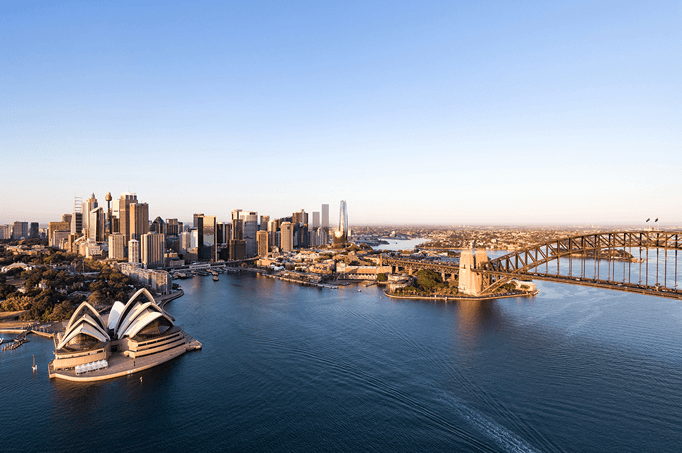
Program Status Update
The New South Wales government has invited applications from offshore migrants under the following nomination streams:
The NSW State Government announced that offshore applicants skilled in certain ANZSCO unit groups are still eligible for NSW nomination.
*Please note: Invitation rounds occur throughout the financial year.
NSW invites and nominates SkillSelect EOIs at the ANZSCO unit group level. To be eligible for NSW nomination (for either Subclass 190 or Subclass 491) you must be skilled in an occupation that both:
It is important to note that not all occupations within ANZSCO unit groups are eligible for the respective visa. It is the responsibility of the prospective migrant to ensure their occupation is eligible for the visa before obtaining a skills assessment.
For the 2022-23 financial year, NSW have introduced a new requirement regarding your Skillselect EOI. To be eligible for NSW nomination, your Skillselect EOI must be for ONE visa and for NSW only.
This means that if your Skillselect EOI has multiple visas and/or multiple states selected (this includes selecting ‘ANY’), your Skillselect EOI will not be considered for NSW nomination.
The skills lists for 2022-23 are available on the Investment NSW website. Additional ANZSCO unit groups will not be added this financial year, however, the skills lists are reviewed annually.
For a further explanation of how the skills list works, see the Common questions about skilled visas page on the NSW Government website.
Before submitting an EOI for New South Wales, applicants should check that they meet all eligibility requirements for either;
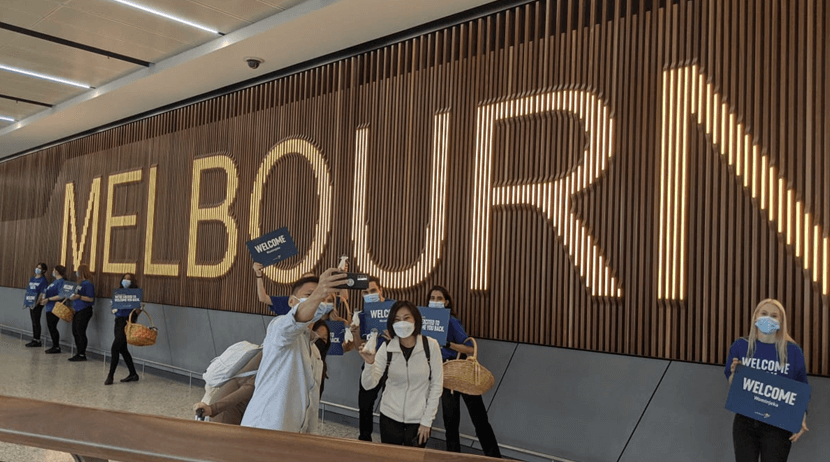
The Department announced on the 4th of November 2022 that a new Ministerial Direction for prioritising skilled visa applications has come into effect as of 28th October 2022. The new Ministerial Direction has ceased the Priority Migration Skilled Occupation List (PMSOL), as sectors that had occupations on the PMSOL also had a critical shortage of many other occupations that weren’t on the PMSOL. With the new Ministerial Direction more occupations within these sectors will be processed faster and more efficiently!
The Skilled Occupation List (including MLTSSL, STSOL, ROL and RSMS lists) remains active. You can view the summary version of Australia’s current Skilled Occupation List via ‘Step 1’ in the Member’s Area. Note, the Skilled Occupation List is a permanent part of Australia’s migration program and as such remains in effect indefinitely.
The new Ministerial Direction states the following:

The country closed its borders during COVID and foreign students and backpackers went home. It is now facing the western world’s second-worst employee shortage, with some companies offering signing bonuses and flying them in from overseas. Australia is now reviewing its entire visa and immigration system in an all-out effort to rapidly increase its workforce. The review is due to come out in February.
Since slamming its borders shut during COVID, the country has struggled to find enough skilled and unskilled workers to fill jobs and drive the economy.
Australia has the second worst skills shortage among the world’s richest countries.
Beneath the Sydney Opera House, a waterfront bar and restaurant is crying out for staff.
Solotel chief executive Elliot Solomon says they urgently need chefs, wait staff, bartenders and baristas.
“We have a couple of fine-dining restaurants and we can’t open on certain days because we don’t have enough staff,” he said.
Mr Solomon said wages are up 25% in a year and servers average around £20 an hour.
Work incentives include £500 sign-on bonuses and half price food and drinks for employees and their friends.
Other restaurants are flying foreign staff into the country and providing accommodation.
In March, British backpacker Chloe Ankers moved from Manchester to Cairns and now Sydney.
“There are jobs everywhere up and down the coast,” she said.
“The pay is amazing, compared to back home there’s a big difference.”
With most foreigners preferring the beach to the bush, staff shortages are even worse in regional and remote areas.
Before COVID, 80% of seasonal farm labour came from backpackers.
Three hundred miles west of Sydney in Leeton, tonnes of oranges are left to rot because there are not enough people to pick them.
Orchard owner Frank Mercuri said it is “devastating”, with his business having lost 140,000 pounds of fruit.
Australians are not filling these jobs – the unemployment rate is the lowest in 48 years.
It is an employee’s market. A survey by National Australia Bank found one in three businesses want to hire more people.
A total of almost half a million workers are needed in almost every industry, from hospitality and tourism to construction, technology, agriculture and mining, as well as teachers and nurses.
There is also a severe shortage of tradespeople; mechanics, builders and plumbers – the list goes on.
Car workshop owner Cameron Virtue is under pressure and cannot expand his business. Without enough technicians, he is working a 70-hour week.
He said: “I think we need to look more overseas, I generally find that techs trained in the UK are far superior to what we have here.”
Mechanic Joel Swain has no regrets about swapping North Yorkshire for the Sydney summer.
He recently returned home to see family and friends and says that was the “final nail in the coffin”.
“You can see people aren’t that happy [in the UK] and more and more of my friends are migrating, travelling Asia and coming to Australia for this life,” he said.
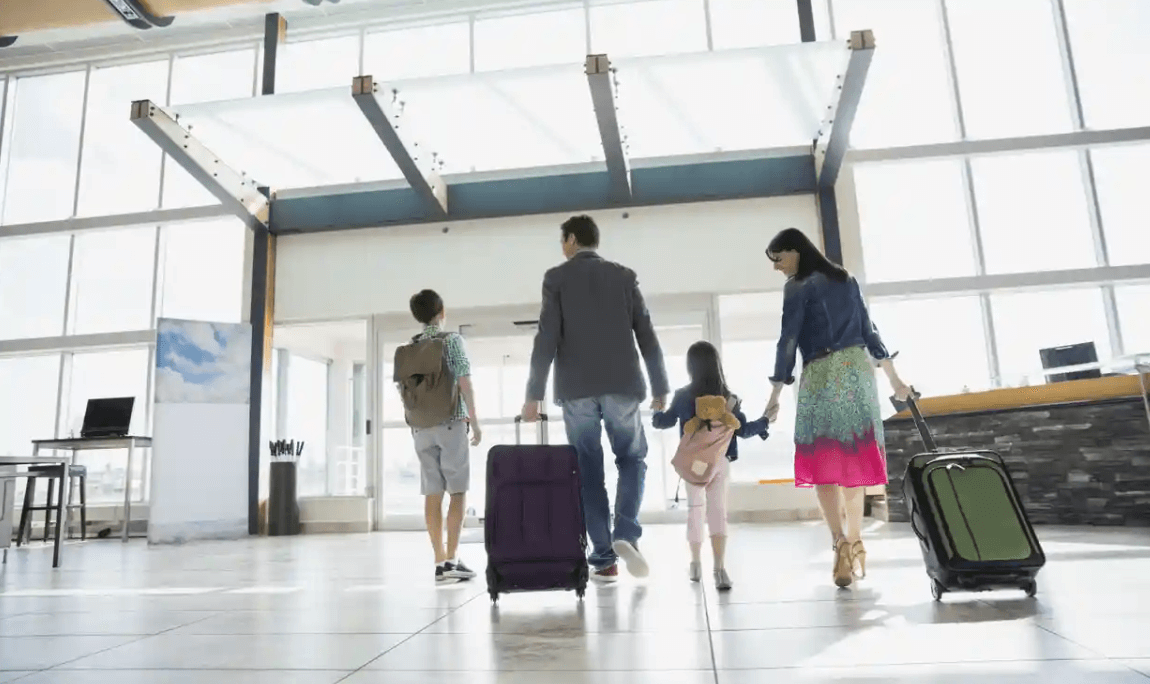
The Labor Government has now been urged by Australian business groups to further lift the annual permanent migration intake to make up for the hundreds of thousands of missing workers who were unable to relocate to Australia during the pandemic.
As the federal government’s review of Australia’s migration system gets under way, Deloitte is calling on Labor to bring more skilled workers into the country and consider scrapping labour market testing.
The review comes alongside the release of the federal government’s annual Population Statement, which highlights the role skilled migration will play in compensating for Australia’s declining fertility rate.
Deloitte partner Fiona Webb, who works in the firm’s global employer services division, said modelling by Deloitte Access Economics showed there would be 900,000 fewer people living in Australia by mid-2025 due to Australia’s border closures.
“Migration always needs to be a demand-driven program, and at present the demand is such that you could go beyond the current cap,” she said.
“This demand is really going to be here for at least three to five years, while businesses look at things like different training models, apprenticeships, [and] automation.”
Mildura Base Public Hospital’s executive director of people, culture and wellbeing, Janelle McGregor, said international workers were one of the hospital’s major talent sources, as the healthcare sector battles with acute labour shortages.
She said the hospital had started offering visas with a pathway to permanent residency to lure international candidates, who were often unwilling to move somewhere as remote as Mildura.
While the strategy worked, delays processing visas at the Department of Home Affairs mean the applicants won’t arrive any time soon.
She wants the government to consider alternative visa rules that entice more international workers into regional Australia, such as through easier pathways to permanent residency.
Australian Chamber of Commerce and Industry chief executive Andrew McKellar said Australia’s past economic success had been inextricably linked to the country’s attractiveness as a destination for working-aged migrants.
“Government should continue to leverage this advantage by ensuring efficient and cost-effective visa settings so that businesses can attract the skilled workers they need,” Mr McKellar said.
“The upcoming overhaul of skilled migration rules must deliver greater flexibility for businesses that need access to in-demand workers.”
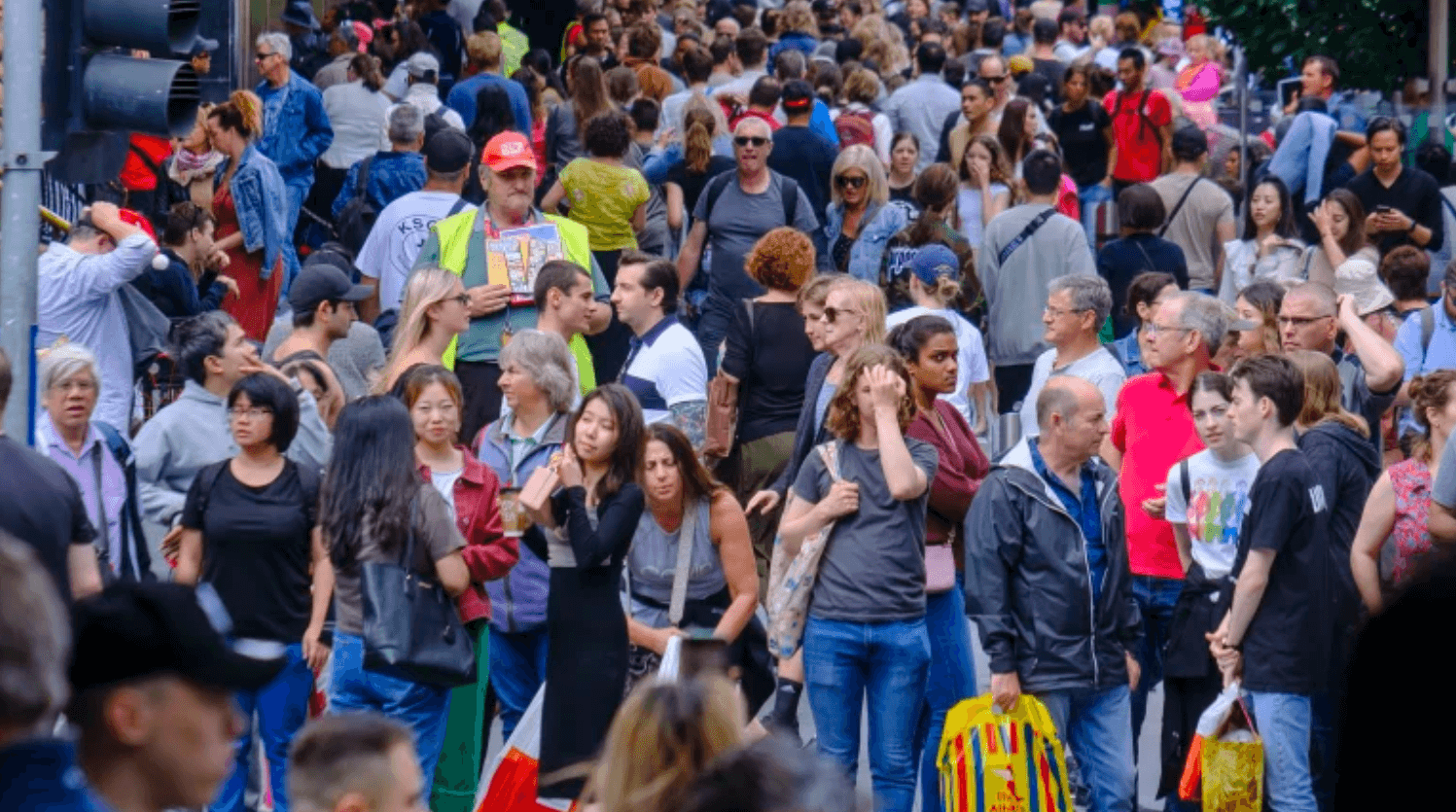
Since the first boatloads of convicts were brought to Australia against their will at the end of the 18th century, we’ve been a country of immigrants. Into the future, migration will play a decisive role in how our nation continues to grow and age. Without it, we are economically much worse off.
I’ll put my stake in this up front: three out of four of my grandparents arrived in Australia via boats in the great post-war shift that brought migrants from mostly European countries, including the UK, Greece and Italy.
Since then, migration has continued to shape our country, culturally and economically. And as the Australian birth-rate continues its seemingly inexorable downward trend, migration will be vital for the country’s future.
Australia’s birth-rate has been in steady decline for about half a century. Today women have on average 1.66 babies, below the rate of 2.1 babies per woman, which is required for a generation to replace itself.
That means Australians are getting older. According to the recently published 2022 Population Statement from the government’s Centre for Population, the median age is expected to reach nearly 43 by 2060-61 if the baseline fertility scenario holds. Under that scenario, the fertility rate will gradually fall to 1.62 by 2030-31 and continue its downward trend.
By 2060-61, the government expects the population to reach 39.2 million. The report says that natural increase (that is, total births minus total deaths) under the baseline fertility scenario would contribute to a quarter of expected population growth – the rest would be driven by overseas migration.
That scenario projects 23 per cent of the population to be aged 65 or over by 2060. As of 2020-21, nearly 17 per cent of Australia’s 25.7 million people were over 65.
But if you take migration out of the picture, we get a very different nation. Assuming the number of people moving to Australia equals the number of people leaving, Australia’s median age by 2060 will reach 46.6, and 28.7 per cent of the population – nearly a third – would be aged over 65.
This would have profound effects on the cost of health, aged care and age pensions.
The 2021 Intergenerational Report points out that population ageing will reduce the number of people in the workforce, meaning fewer people paying income tax.
“This presents long-term economic and fiscal challenges, similar to those faced in most comparable countries,” the report noted.
Migration slows this ageing effect down because migrants are typically younger.
According to the Grattan institute, skilled migrants “tend to be younger, higher-skilled, and earn higher incomes than the typical Australian”. They are also more likely to work full time, compared to the general Australian population, and are increasingly likely to be highly educated.
Those workers pay taxes in Australia, which helps fund our health and aged care services which are only becoming more expensive as the nation ages. They also spend money here, helping to keep the economy ticking, and other people in various jobs.
But what happens if we don’t take in enough migrants? There are lessons here from the country with the oldest population – Japan. Their fertility rate is 1.33, according to the OECD, and their median age 48.7 and growing towards 54.7 by 2050.
The government there fears a growing wave of business closures as owners reach retirement age with no one to replace them despite healthy earnings, as highlighted in a recent New York Times article. Key businesses there could close, as even many workers who could potentially take the reins near retirement themselves.
That is just one example of the risks faced by an ageing country.
After my grandparents arrived in Australia, they became respectively a cook, train driver and a school principal. Between them, they had five children and more than a dozen grandchildren, who have had jobs as varied as artists, veterinarians, doctors, social workers, and yes; one journalist.
In their small way, my grandparents came to Australia and made the most out of their new circumstances and what this country has to offer. It’s people like them who will help shape the future.

A new report has found Australians are the richest people in the world – and three times richer than the average American.
Australians are the richest people in the world, with a median wealth three times that of the average American, a new report has shown.
America ranked second in terms of average wealth per adult at $US579,050 ($A826,310), a recently released report from investment bank Credit Suisse found – but that statistic is famously skewed upwards by the very, very wealthy.
According to the “more relevant” metric of median wealth, however, Credit Suisse said Australians came out on top.
Australians collected a higher median wealth per adult than anywhere else in the world at $US273,900 ($A390,870) – nearly three times the median wealth of $US93,270 ($A133,100) in the US.
Australia was followed on the rich list by Belgium and New Zealand, with the US trailing behind at number 18.
Professor Susan Thorp, a finance professor at the University of Sydney Business School, said Australians had their superannuation savings to thank for the huge discrepancy.
Wealth was defined as the value of a household’s financial and real assets – including real estate and super – minus any debt.
“About 40 per cent of US households don’t have private retirement accounts like our superannuation, and rely mainly on social security payments after they leave the workforce,” Professor Thorp said.
“The report includes retirement savings assets, but not entitlement to state pensions – which means our superannuation savings are counted, but US social security entitlements are not.”
Australia’s compulsory super system meant even Australians on the poorer end of the median wealth scale could accumulate financial assets, Professor Thorp added.
“Superannuation accounts for around 20 per cent of the assets of the bottom 20 per cent of Australian households,” she said.
“That means lower wealth households can benefit from the growth in financial asset values. This is less likely for lower wealth households in the US, who typically don’t hold stocks and shares, either directly or indirectly, because they don’t have retirement accounts.”
House prices – boosted by a pandemic real estate boom – also played a role.
Professor Thorp said it was “hard to make comparisons” between the housing markets of the two countries – but since most Australians live in major cities, they’re more likely to see rapid growth in the value of their homes.
The US’s dominance in terms of average wealth likely pointed towards a greater degree of economic inequality – as very rich residents can pull average wealth upwards at the expense of poorer Americans.
Notably, the report showed the US was home to the largest number of “ultra-high-net-worth” individuals, with more than 140,000 ultra rich people to drag the country’s average wealth stat upwards.
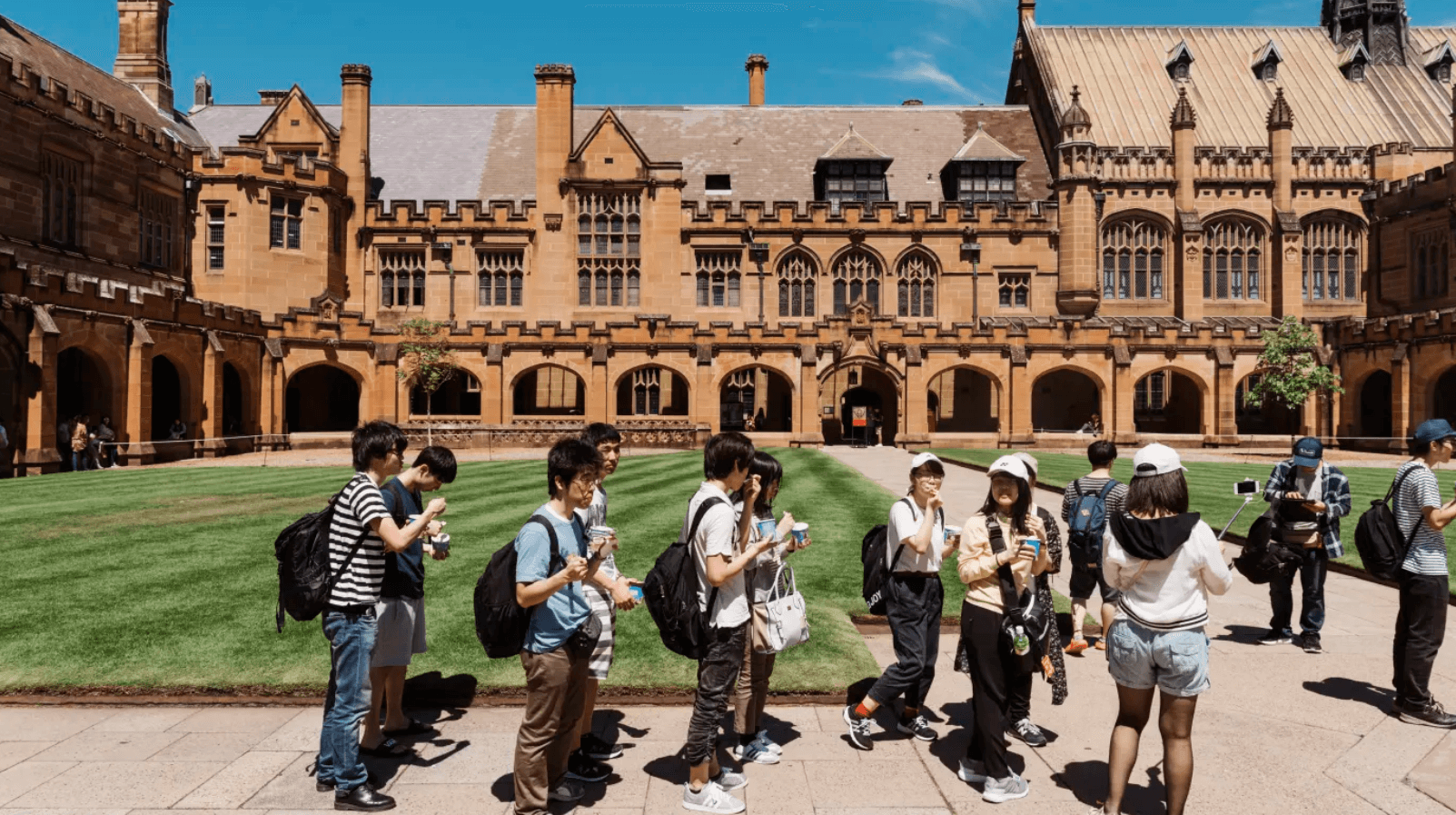
Visa delays are sparking frustration among PhD students who have received offers from Australian universities. Here’s what you can learn from this sage.
PhD student visa delays are causing anxiety among international students and Australian academics.
Students from countries like Iran, China, and Pakistan with offers from Australian universities say that they have been waiting for up to three years to obtain their visas (including the 2 year border closure and 1 year pandemic driven visa backlog).
One Iranian student has been waiting for two years to get his student visa approved. Tired of this, he’s swapping Australia for the UK.
“The entirety of [the] UK process, from the interview for the position to the visa admission, took about five months,” the Iranian student explained.
Clément Canonne, a computer science lecturer at the University of Sydney, shared his concerns on Twitter, causing some other academics to weigh in.
Some have described the situation as “frustrating” and “unbearable.”
Canonne is worried that PhD student visa delays will hinder the university’s ability to recruit top students in the future.
Worse, some students would have to sacrifice other PhD or work opportunities.
Australian student visa delays explained
Since the reopening of Australian borders reopened on Dec. 15, 2021, the Department of Home Affairs (DHA) has reportedly been grappling with an influx of applications.
Visa backlogs by those affected by the country’s two-year border closure add more delays.
There was also a budget cut of 875 million Australian dollars to the DHA, which could have increased the student visa processing times.
Ninety percent of PhD student visa applications take up to 10 months, according to DHA data. All international students must apply for a subclass 500 student visa to study in Australia.
If you are thinking about starting this postgraduate journey in Australia, here are four tips to help avoid the delays and recieve your visa on time.
4 tips to help speed up your PhD student visa application
Remember this: there is no magic bullet to speed up your visa application once you have submitted it. It is also difficult to predict when you could get your Australian student visa.
But there are certain things you can do to help reduce basic visa application errors that can slow down your application.
1. Fill out your application correctly
Check through all the necessary details in your application and ensure you have all your documents.
Here’s a checklist of what you need for this application:
You would also need to pass the health and character requirements for this application. You can also get someone to help you with your application, such as a registered migration agent, a legal practitioner, or an exempt person, notes the DHA.
2. Submit genuine documentation
This is a no-brainer. The DHA recommends “check twice, submit once” for a faster visa processing time. Do consider attaching separate verifications for the documents you submit.
3. Don’t apply at the last minute
Once you have been accepted into your programme at an Australian university or institution, start collecting the necessary documents needed for your visa and apply immediately.
4. Respond immediately if you’re asked to provide additional documentation
If the DHA contacts you for further clarification(s) or requests more documents regarding your application, reply promptly to prevent any delays.
Some applications can be rejected due to insufficient or incomplete documents.
Remember to check your Immigration and Border Protection (IMMI) online account regularly. If a migration agent is handling your application, follow up by checking if there are any requests by the DHA.
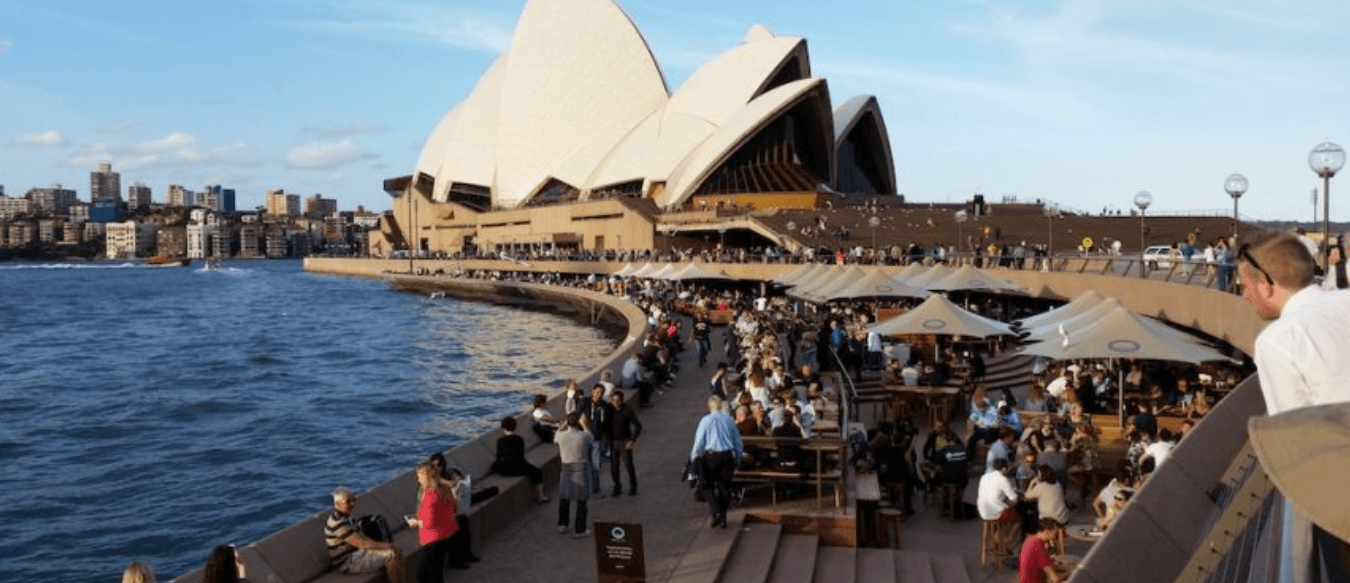
Australian universities have been “inundated” with applications from international students as demand exceeds pre-covid levels at some institutions.
Applications from international students were 40% higher than in 2019 at the University of Wollongong and 27% higher at the University of Queensland, according to Australian press.
Much of the demand is from Indian students, as applications from this cohort increased by over 150% at the University of Queensland.
Chinese applications are less stable. Macquarie University experienced a 27% decline in demand, while other institutions are seeing more interest. UNSW in Sydney and the University of Queensland reported 25% and 40% increases in application rates from China, respectively.
Alex Frino, senior deputy vice-chancellor at the University of Wollongong, said that the institution decided to focus its recruitment efforts in China, India and Vietnam shortly before borders reopened.
“The subcontinent component really took off,” Frino said. “So India is our number one source country and Pakistan is our number two. Nepal is our number three. So the subcontinent’s really responding and responding quickly, at record levels.”
While Frino said the University of Wollongong has been “inundated” with applications, he described demand across the sector as “patchy” but “reasonably strong”. The picture is also “mixed” for independent providers, according to Troy Williams, CEO of ITECA, with members concerned about high student visa application rejection rates.
“The student visa application rejection rate is more profound in the international skills training sector, with some members now questioning whether their institution will be viable over the medium term,” Williams said.
Frino blamed the “poor response” from China on geopolitical tensions and China’s border closure.
“We really don’t know which of those two reasons account for the huge drop in applications from Chinese students and we’ll soon find out now that the borders have opened. As the next few weeks unfold, applications and application numbers from China will tell us whether it was the geopolitical situation or the closure of borders that was holding back applications.”
Catriona Jackson, CEO at Universities Australia, said the population statement “confirms international students play a vitally important role in our migration mix”.


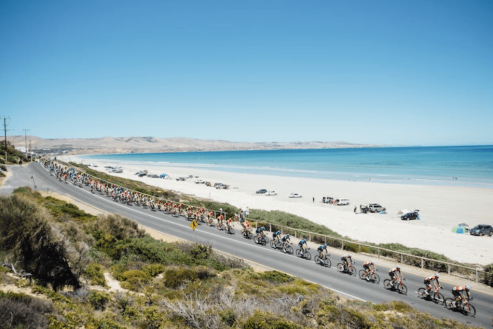




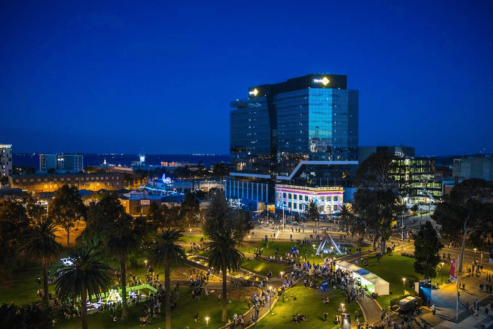

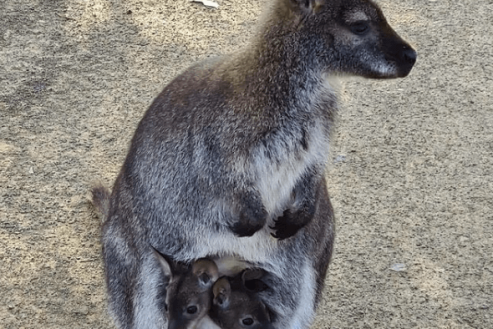
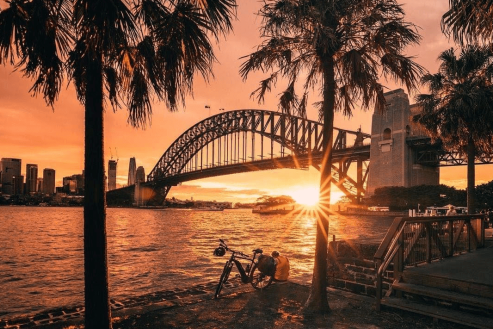

As legislation and travel requirements are constantly changing, we strongly recommend obtaining advice on your individual situation from a Registered Migration Agent. Please click here to book a consultation with one of our Registered Australian Migration Agents, located in Australia.






You can manage your membership and billing method by clicking here
Terms of Service
Privacy Policy
Copyright © 2025 Office of Immigration Australia, a private company registered in Australia. All Rights Reserved.